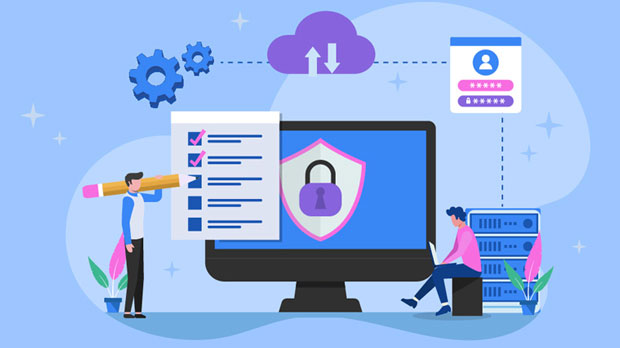How does the decision to use an IP Residential Proxy or a Dynamic Proxy depend on what factors?
When deciding between IP residential proxies and rotating proxies, it's crucial to understand the different use cases, advantages, and limitations of each type. The decision hinges on factors such as the nature of the tasks, the level of anonymity required, the scale of operations, and the risk tolerance of the business. Residential proxies provide enhanced legitimacy, closely mimicking real user behavior, while rotating proxies offer a scalable and dynamic solution ideal for high-volume web scraping or circumventing geographical restrictions. Understanding these key factors helps businesses select the most suitable proxy for their needs, ensuring efficiency, cost-effectiveness, and minimal risk of detection. What Are IP Residential Proxies and Rotating Proxies?Before diving into the key decision-making factors, it's important to distinguish between IP residential proxies and rotating proxies.IP Residential Proxies are IP addresses provided by real internet service providers (ISPs). These IPs are assigned to real residential devices, such as computers or smartphones, which makes them appear like legitimate users browsing the internet. This type of proxy is highly effective for tasks that require a high level of trust and realism, such as social media management, ad verification, and localized content scraping.Rotating Proxies, on the other hand, are often associated with a pool of IP addresses that automatically rotate at regular intervals or with each request. These proxies are ideal for tasks that require scalability and anonymity, such as data scraping at scale, price comparison, or sneaker botting. The constant IP rotation helps mask the source of requests, minimizing the risk of detection by websites.Key Factors to Consider in the Decision-Making ProcessThe choice between IP residential proxies and rotating proxies should be based on several critical factors. Let's explore these in detail:1. Nature of the TaskThe type of task being performed is one of the primary factors to consider when choosing between IP residential proxies and rotating proxies.- Residential Proxies are best for activities that require a high degree of authenticity. For example, if you're involved in social media account management, ad verification, or online shopping, where your actions need to mimic real users, residential proxies are the better choice. Websites tend to trust residential IPs because they come from real user devices, making them less likely to trigger anti-bot mechanisms. - Rotating Proxies are more suitable for large-scale data scraping or other activities that involve a high volume of requests. If your task is based on crawling websites, gathering large datasets, or conducting competitive analysis, rotating proxies are the way to go. The ability to rotate IPs frequently reduces the chances of getting blocked, allowing for continuous and automated access.2. Anonymity and Privacy RequirementsThe level of anonymity needed can significantly influence your choice of proxy.- Residential Proxies provide better anonymity because they are tied to real users and are less likely to raise red flags. This makes them a preferred choice for tasks where maintaining a low profile is critical. For example, when accessing sensitive data, managing multiple accounts, or performing localized searches, using residential proxies ensures that your activities are less likely to be flagged by websites. - Rotating Proxies also offer anonymity, but since the IPs are often from data centers or shared proxy pools, they might not provide the same level of trustworthiness as residential proxies. Websites can identify and block these types of proxies more easily, especially if the same set of IPs is used repeatedly. However, their ability to rotate IPs at a high frequency can still make them effective for activities where a high degree of anonymity is not essential.3. Scalability and Volume of RequestsThe scale of your operations plays a significant role in determining which type of proxy is more suitable.- Residential Proxies may offer less scalability compared to rotating proxies. This is because residential proxy providers often have a limited pool of IPs, making it more difficult to scale large operations that require thousands or even millions of unique IP addresses. While residential proxies are ideal for small to medium-sized tasks, they might struggle to handle large volumes of requests in a short period of time. - Rotating Proxies are specifically designed for scalability. The ability to rotate through a large pool of IPs makes them ideal for high-volume tasks. Whether you're scraping a vast number of web pages, monitoring market prices, or running bots, rotating proxies can handle large-scale operations with ease. The continuous rotation minimizes the risk of hitting rate limits or facing IP bans, allowing for uninterrupted data collection.4. Risk Tolerance and Cost ConsiderationsUnderstanding the balance between risk and cost is crucial when selecting the right type of proxy.- Residential Proxies tend to be more expensive due to their association with real user devices. They offer a higher level of trust and security, making them suitable for high-risk activities. However, the cost may not be justified for businesses that need to perform low-risk tasks with minimal resource allocation.- Rotating Proxies, while less expensive than residential proxies, come with their own set of risks. The primary risk is the increased likelihood of detection due to the nature of the IPs (which may be seen as non-human traffic). However, for businesses that prioritize cost-effectiveness and can tolerate some level of detection, rotating proxies are a viable option.5. Geolocation and Targeted RequestsGeolocation plays an important role when choosing between residential and rotating proxies.- Residential Proxies are ideal when you need to access content that is geographically restricted or localized. Since these proxies come from real users across different regions, they allow you to bypass geo-restrictions and perform localized searches effectively. This makes them perfect for accessing region-specific content, testing ads in different regions, or checking search engine rankings by location.- Rotating Proxies can also be used for geolocation purposes, but they may not offer the same level of precision as residential proxies. The IPs in rotating proxy pools may be spread across multiple regions or data centers, which could make it harder to target specific geographical locations. However, some rotating proxy providers offer country or city-specific IPs, which may suit specific geolocation needs.ConclusionChoosing between IP residential proxies and rotating proxies depends on a variety of factors, including the nature of the task, anonymity requirements, scalability, cost, and geolocation needs. Residential proxies excel in authenticity, trust, and anonymity, making them suitable for tasks that require real-user behavior. On the other hand, rotating proxies are ideal for high-volume, large-scale tasks where anonymity is important but can tolerate the risk of detection. By carefully evaluating these factors, businesses can select the most suitable proxy type to optimize their online operations, ensuring efficiency, cost-effectiveness, and minimal disruption.
2025-02-01

























































